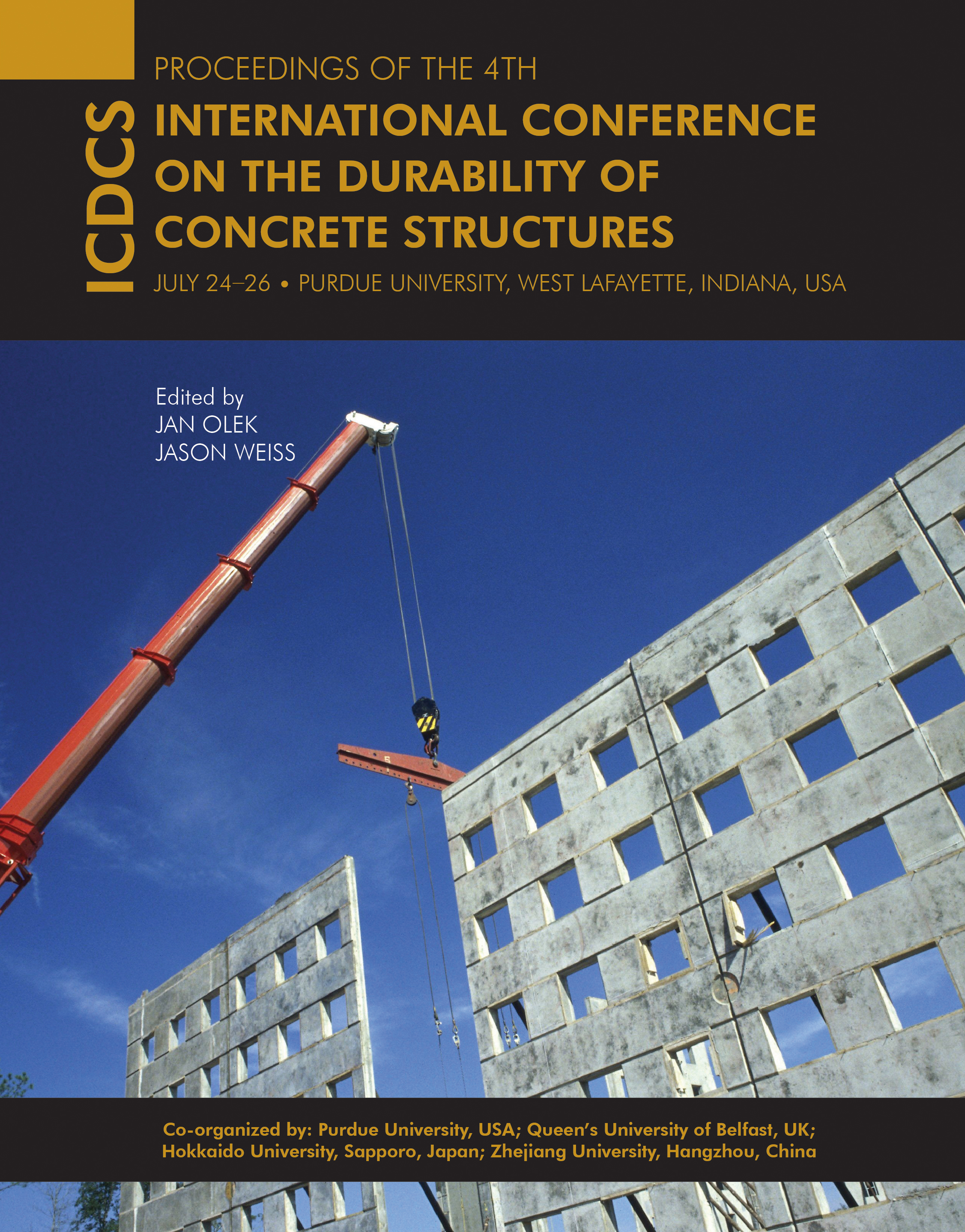Abstract
On RC beam members damaged by freeze–thaw cycles, the authors performed nonlinear finite-element analysis using distributed reinforcement and smeared cracking models, toward evaluating the structural properties of such RC beams. We then compared the analysis results to test results. The comparison found that the accuracy of analysis depends on the severity of concrete deterioration. It was clarified that the test values do not agree with the analysis values for RC beams that experience shear rigidity reduction from freezing damage to the compressive area or for RC beams that experience decreased rebar–concrete bonding strength from freezing damage to the tensile area. It was also clarified that the analysis may enable the evaluation of the rigidity to yield the failure mode and the maximum load for RC beams that have experienced no major decreases in shear rigidity and bonding strength.
Keywords
repeated freeze–thaw cycles, RC beam members, structural property, nonlinear finite-element analysis, shear rigidity, bonding strength
Date of Version
January 2014
DOI
10.5703/1288284315381
Recommended Citation
Hayashida, Hiroshi; Sato, Yasuhiko; and Ueda, Tamon, "Evaluation of Structural Properties of the Freeze–Thaw-Damaged RC Beam Members by Nonlinear Finite-Element Analysis" (2014). International Conference on Durability of Concrete Structures. 6.
https://docs.lib.purdue.edu/icdcs/2014/freezethawdeterioration/6
Included in
Evaluation of Structural Properties of the Freeze–Thaw-Damaged RC Beam Members by Nonlinear Finite-Element Analysis
On RC beam members damaged by freeze–thaw cycles, the authors performed nonlinear finite-element analysis using distributed reinforcement and smeared cracking models, toward evaluating the structural properties of such RC beams. We then compared the analysis results to test results. The comparison found that the accuracy of analysis depends on the severity of concrete deterioration. It was clarified that the test values do not agree with the analysis values for RC beams that experience shear rigidity reduction from freezing damage to the compressive area or for RC beams that experience decreased rebar–concrete bonding strength from freezing damage to the tensile area. It was also clarified that the analysis may enable the evaluation of the rigidity to yield the failure mode and the maximum load for RC beams that have experienced no major decreases in shear rigidity and bonding strength.





